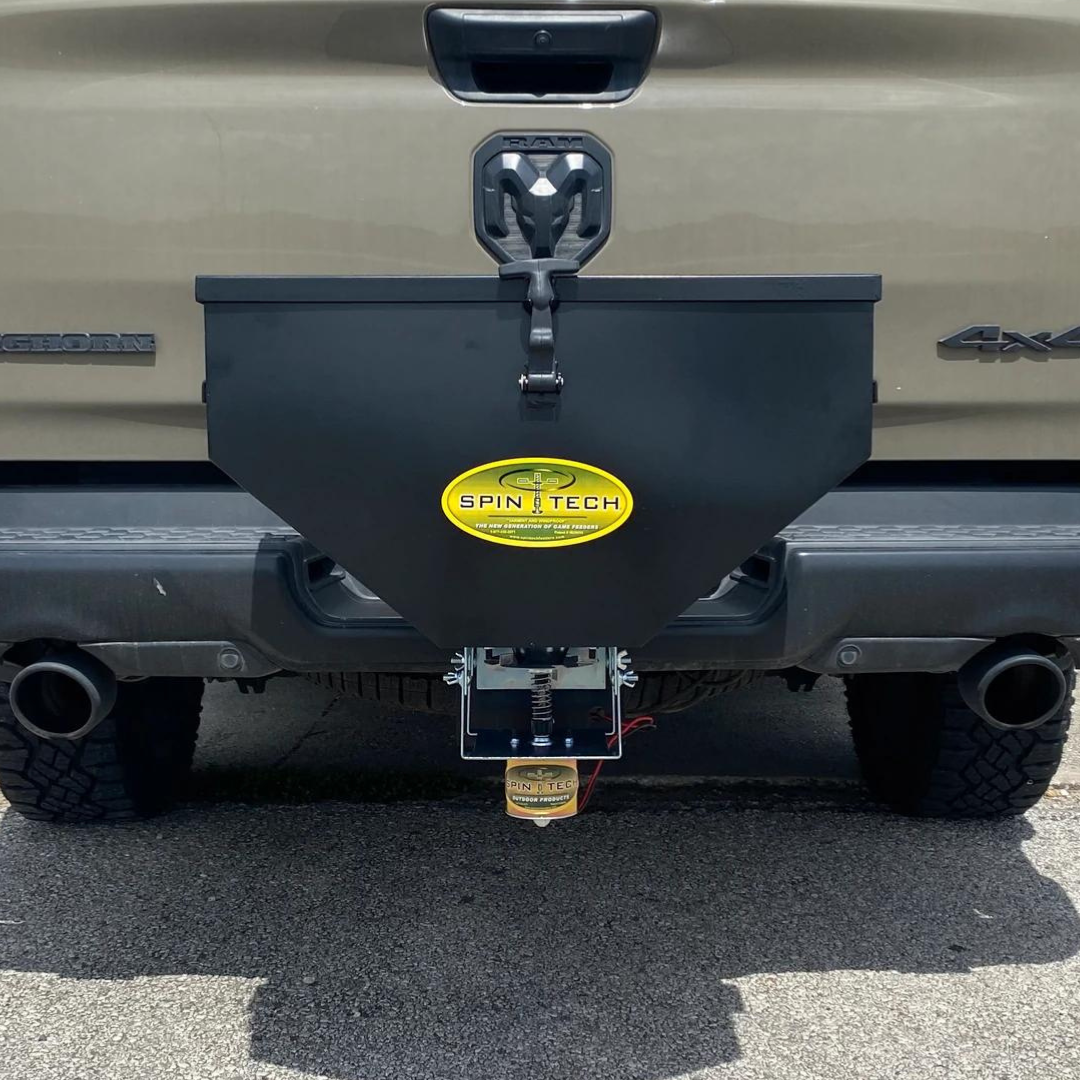How to Prep Your Yard for a Vibrant Growing Season
Spring is here, bringing longer days, warmer weather, and the perfect opportunity to breathe new life into your lawn. After months of winter dormancy, your yard needs proper care to thrive. Whether you’re a homeowner looking to refresh your lawn or a land manager preparing large areas for new growth, the right prep work makes all the difference. In this story, we’ll cover essential steps to ensure your lawn is lush, green, and ready for the season ahead.
Step 1: Soil Testing & pH Balance
A thriving lawn starts with healthy soil. If your grass struggles to grow, turns yellow, or looks patchy despite regular watering and fertilization, the problem likely lies beneath the surface. Soil testing is the first and most crucial step in preparing your lawn for a successful growing season. By understanding your soil’s pH and nutrient levels, you can create the perfect foundation for strong, vibrant grass.
Why Soil Testing Matters
Different grass types thrive in different soil conditions, but most lawns prefer a slightly acidic to neutral pH (between 6.0 and 7.0). When soil becomes too acidic (low pH) or too alkaline (high pH), it restricts the ability of roots to absorb essential nutrients, making fertilizer less effective.
A simple soil test will tell you exactly what your lawn needs, ensuring you’re not wasting time or money on unnecessary treatments.

How to Test Your Soil
✔ Use an at-home soil test kit or send a sample to a professional testing service for detailed results.
✔ Check the pH level—if it’s too low (acidic), apply lime to raise it. If it’s too high (alkaline), use sulfur to lower it.
✔ Analyze nutrient levels—ensure your soil has enough nitrogen (N), phosphorus (P), and potassium (K) to promote healthy growth.
Balancing Your Soil for Optimal Growth
Once you’ve tested your soil, make adjustments based on the results:
- Low pH (Acidic Soil, Below 6.0): Apply lime to neutralize acidity and improve nutrient availability.
- High pH (Alkaline Soil, Above 7.0): Add sulfur or organic matter (like compost) to bring it back to a balanced level.
- Nutrient Deficiencies: If your soil lacks nitrogen, phosphorus, or potassium, choose a balanced fertilizer that replenishes these nutrients based on your soil’s needs.
Pro Tip: Fertilizer works best when your soil is properly balanced, so don’t skip this step! Testing your soil before fertilizing ensures that you’re feeding your lawn exactly what it needs, leading to better growth, deeper roots, and a healthier yard all season long.
Step 2: Cleaning & Aeration
Before you can start seeding, fertilizing, or watering, your lawn needs a fresh start. After months of winter dormancy, dead grass, fallen leaves, and compacted soil can block sunlight, air, and nutrients from reaching your lawn’s roots. Clearing out debris and aerating the soil are essential steps to creating the ideal conditions for new growth.
Why Cleaning & Aeration Matter
Over time, organic debris, such as leaves, twigs, and thatch (a dense layer of dead grass and roots), can suffocate your lawn. This buildup prevents sunlight from penetrating, limits airflow to the roots, and traps moisture, which can lead to disease and fungus. Proper cleaning ensures your grass gets the air, water, and nutrients it needs to grow strong and healthy.
How to Prepare Your Lawn
✔ Remove winter debris – Rake up leaves, twigs, and dead grass to clear space for sunlight and air to reach the soil.
✔ Dethatch if necessary – A thin layer of thatch (½ inch or less) is beneficial, but a thick, matted layer can block nutrients and water from penetrating the soil. Use a dethatching rake or power rake to break it up.
✔ Aerate the soil – Using a core aerator or spike aerator, punch small holes in the ground to loosen compacted soil and improve nutrient absorption.

How Aeration Helps Your Lawn
Heavy foot traffic, heavy machinery, and even natural settling over time can compact the soil, making it difficult for roots to grow deep and strong. Aeration:
✔ Allows oxygen, water, and nutrients to reach roots more effectively
✔ Reduces water runoff by improving soil drainage
✔ Prepares the lawn for stronger root development and new growth
Taking the time to clear and aerate your lawn sets the stage for better seed germination, improved fertilizer absorption, and stronger, more resilient grass throughout the growing season.
Pro Tip: Aeration is especially important for compacted soil—if your yard sees a lot of foot traffic, has clay-heavy soil, or hasn’t been aerated in over a year, this step is crucial for healthy grass growth.
Step 3: Seeding & Fertilizing
Spring is the ideal time to seed and fertilize your lawn, ensuring strong root development and vibrant growth throughout the season. Whether you're filling in thin areas, repairing winter damage, or establishing new grass, proper seeding and fertilization will give your lawn the best possible start.
Why Spring Seeding & Fertilizing Matter
Winter can leave your lawn patchy, weak, and nutrient-depleted. Seeding in early spring helps thicken your turf, crowd out weeds, and improve overall resilience, while fertilization provides the essential nutrients your grass needs to develop deep, strong roots.
A well-fed lawn grows thicker, greener, and more resistant to drought, disease, and pests. But timing, seed selection, and fertilizer choice are key to long-term success.
How to Seed Your Lawn for Even, Healthy Growth
✔ Choose the Right Grass Seed – Different grass varieties thrive in different regions. Select seed that matches your climate, soil type, and sunlight exposure. Consider:
- Cool-season grasses (Fescue, Ryegrass, Kentucky Bluegrass) for northern regions.
- Warm-season grasses (Bermuda, Zoysia, St. Augustine) for southern climates.
- Shade-tolerant varieties if your yard has limited direct sunlight.
✔ Prepare the Soil – Loosen the top layer of soil and rake out debris before seeding to improve seed-to-soil contact. This increases germination rates and ensures even coverage.
✔ Spread Seed Evenly – Use a broadcast or drop spreader to avoid clumping and patchy growth. For small areas, hand-spreading may work, but a spreader ensures better consistency.
✔ Water Lightly & Regularly – Keep the soil moist but not soggy. Light, frequent watering helps seeds establish strong roots without washing them away.
How to Fertilize for Strong, Healthy Growth

✔ Pick the Right Fertilizer – A high-nitrogen fertilizer encourages rapid green growth and root development. Look for a balanced mix like a 3-1-2 or 4-1-2 ratio (N-P-K).
✔ Apply at the Right Time – Fertilize after seeding, but avoid over-fertilizing, which can burn young grass.
✔ Use a Quality Spreader – Using a high-quality spreader ensures even seed and fertilizer distribution, giving your lawn the best chance to grow thick, uniform, and resilient this season.
✔ Water in the Fertilizer – Lightly water the lawn after application to help nutrients absorb into the soil.
Pro Tip: Choosing the right spreader prevents wasted seed and fertilizer, saving you time, money, and effort while ensuring even, consistent growth. No matter the size of your project, SpinTech has a spreader built to handle the job.
The Right Tools Make a Difference
Applying seed and fertilizer evenly is essential for a successful lawn, and having the right spreader ensures efficiency, precision, and ease of use. Whether you're managing a small backyard, a mid-sized property, or large-scale land management, there's a SpinTech spreader designed to fit your needs.
Find the Perfect Fit for Your Yard or Property:
✔ Electric Hand Spreader – Ideal for small yards and patchwork seeding, this compact, easy-to-use spreader offers precise control and quick application.
✔ ATV/UTV Spreader – Designed for medium-sized yards, this model easily mounts onto ATV racks or any flat, expanded metal surface, making it perfect for efficient spreading over larger areas.
✔ 100LB Corrosion-Resistant Multi-Spreader – Perfect for homeowners tackling bigger projects, this versatile spreader is ideal for medium to large yards, featuring a reliable design that easily breaks down for convenient storage.
✔ Heavy-Duty Multi-Spreader – Built for land management, yard work, and hunting, this rugged spreader handles medium to large areas with ease. Durable and weather-resistant, it’s made for the outdoors.
✔ 200LB Galvanized Multi-Spreader – Engineered for large-scale projects, this high-capacity spreader is perfect for ranchers, landowners, and those managing extensive properties.
Get Your Lawn Spring-Ready Today
Spring is the season of growth, and with the right preparation, your lawn will flourish. By testing your soil, aerating, seeding, and using the right equipment, you’ll set yourself up for a lush, vibrant yard all season long.
Ready to get started? Invest in the right tools and take control of your lawn care today!


